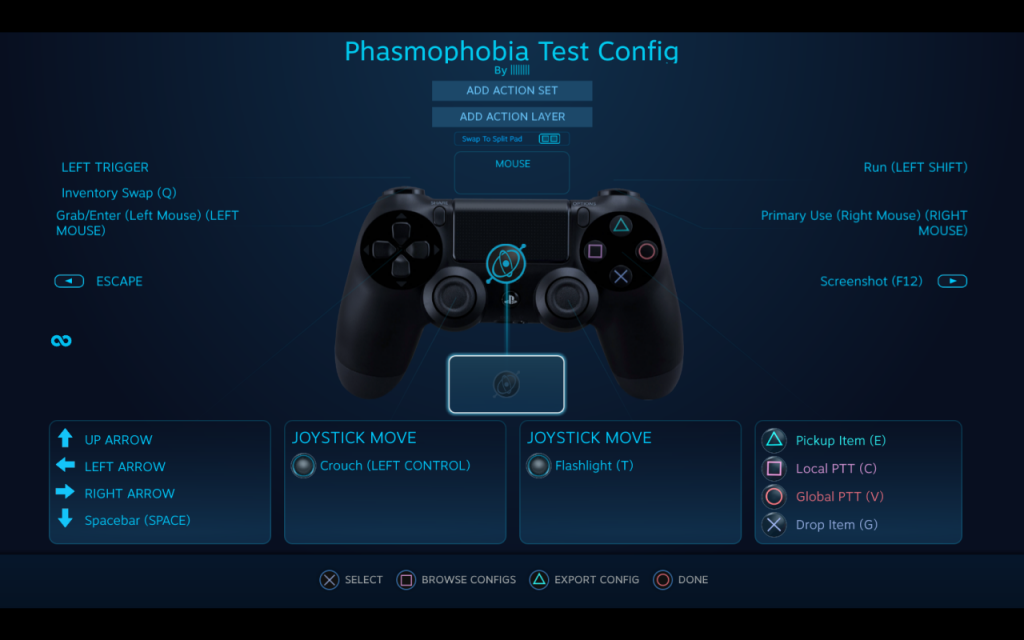

- CONFIGURE CONTROLLER ON PLAYONMAC HOW TO
- CONFIGURE CONTROLLER ON PLAYONMAC FOR MAC OS X
- CONFIGURE CONTROLLER ON PLAYONMAC MAC OS
- CONFIGURE CONTROLLER ON PLAYONMAC PRO
However, on MIDI tracks, the volume and pan controls affect MIDI controller values, and the input and outputs are MIDI channels.įigure 4.5 A MIDI track channel strip in the Mix window. In the Mix window, MIDI track channel strips ( Figure 4.5) have many of the same controls as Audio and Auxiliary Input tracks, including volume, pan, solo, mute, and group ID, plus selectors for automation mode and MIDI input and output. You can also use MIDI tracks to send multiple channels of MIDI to a single virtual instrument plug-in inserted on an Auxiliary Input track. MIDI tracks are used for recording MIDI data into a session and playing it back through an external device. The Track Height, Track View, and Playlist selectors affect the appearance of the playlist. You can also show Inserts, Sends, and I/O views on Auxiliary Input tracks.įigure 4.4 An Auxiliary Input track in the Edit window.īecause Auxiliary Input tracks only route audio into a session and do not record it, the playlist area shows only track automation on the session timeline. In the Edit window, Auxiliary Input tracks include controls for solo and mute, plus selectors for automation mode and track timebase ( Figure 4.4). As with Audio tracks, you can also show Inserts and Sends views.įigure 4.3 An Auxiliary Input track channel strip in the Mix window. In the Mix window, Auxiliary Input track channel strips include controls for volume, pan, solo, mute, and group ID plus selectors for automation mode, audio input paths, and audio output paths ( Figure 4.3). Auxiliary Input tracksĪuxiliary Input tracks are used to bring audio signals into a session from an internal bus, an external input, or a virtual instrument plug-in inserted on the track. The playlist area is where the track's audio and its associated automation are displayed on the session timeline. You can also show Inserts, Sends, and I/O views on Audio tracks. In the Edit window (see Figure 2.1), Audio tracks include controls for record enable, solo, and mute plus selectors for automation mode, track timebase, and Elastic Audio processing ( Figure 4.2).

Figure 4.1 An Audio track channel strip in the Mix window. You can also show Inserts and Sends views. In the Mix window (see Figure 2.24), Audio track channel strips include controls for volume, pan, record enable, solo, mute, and group ID plus selectors for automation mode, audio input paths, and audio output paths ( Figure 4.1). Audio tracksĪudio tracks are used for recording or importing audio into a session, and then editing, arranging, and playing back that audio. The types of tracks you use depends on the kind of material you want to include in your session.
CONFIGURE CONTROLLER ON PLAYONMAC PRO
Pro Tools LE 8 has six track types: Audio, Auxiliary Input, MIDI, Instrument, Master Fader, and Video.
CONFIGURE CONTROLLER ON PLAYONMAC MAC OS
About Track Types The Turing Track Mac Os Download
CONFIGURE CONTROLLER ON PLAYONMAC HOW TO
This chapter explains the track types available in Pro Tools, and shows you how to create and name tracks, assign track inputs and outputs, and organize tracks in a session.

Tracks provide controls for routing inputs and outputs, inserting effects, playing software-based instruments, and mixing. Tracks are the staging areas for the media in a session, including audio, MIDI, and video tracks also include automation and controller data.
CONFIGURE CONTROLLER ON PLAYONMAC FOR MAC OS X
Pro Tools 8 for Mac OS X and Windows: Visual QuickStart GuideĪfter you create a Pro Tools session, you add tracks to it.


 0 kommentar(er)
0 kommentar(er)
